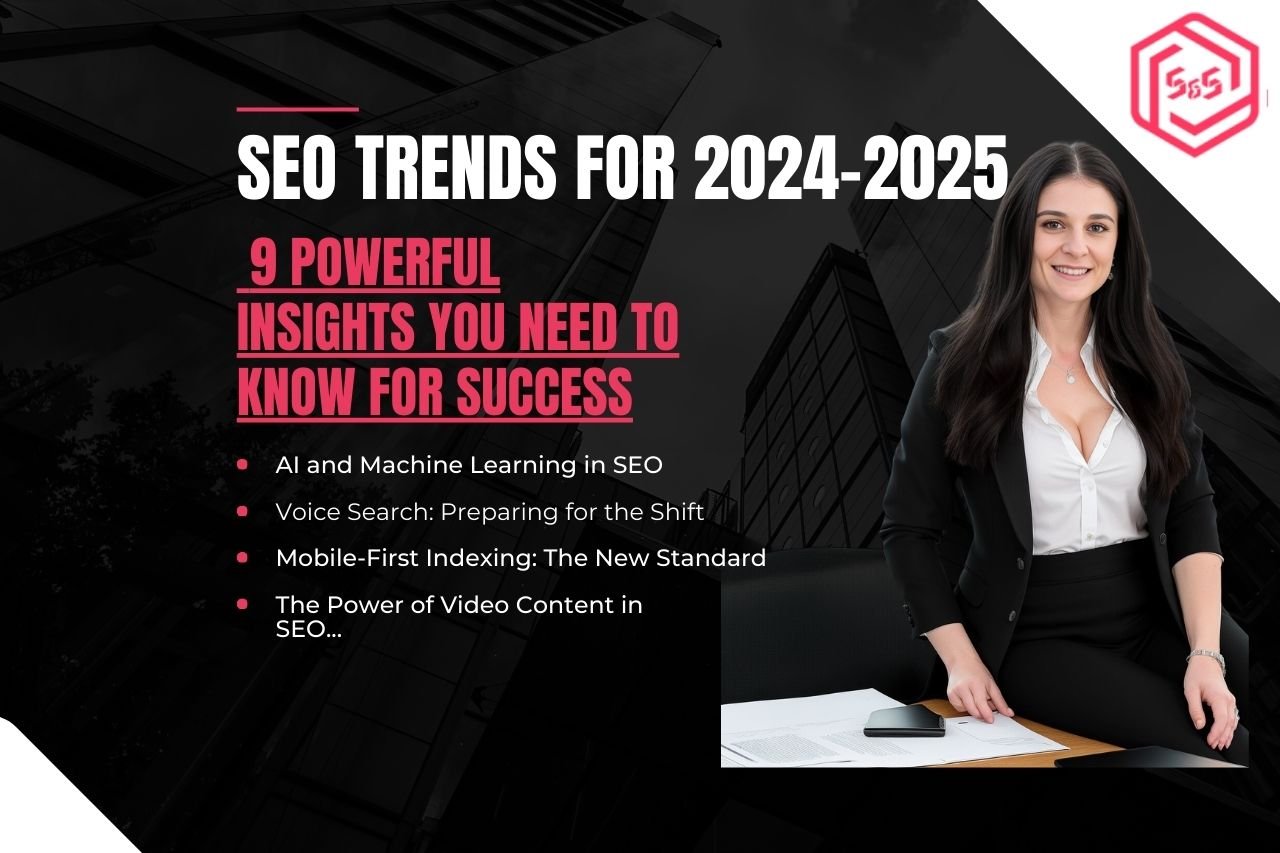Introduction
In the ever-evolving landscape of digital marketing, staying ahead of SEO trends is crucial for maintaining visibility and driving traffic to your website. As we step into 2024, new technologies and shifts in consumer behavior are shaping the future of search engine optimization. This article explores the top SEO trends for 2024 and beyond, offering insights into how businesses can adapt their strategies to stay competitive.
SEO Trends for 2024: How AI and Machine Learning Are Revolutionizing SEO
Rise of AI in Search Algorithms

SEO Trends for 2024 highlight the growing importance of artificial intelligence (AI) in modern SEO, with search engines increasingly relying on AI-powered algorithms to refine search results. Google's RankBrain and BERT are prime examples of how AI is evolving to better understand user intent. For instance, if a user searches for "best smartphones for photography," RankBrain helps Google interpret the search beyond just the keywords, understanding that the user is likely looking for articles or reviews comparing smartphone camera quality. BERT further refines this by processing the context of each word in the query, improving the accuracy of search results for longer, more conversational queries like "how to take professional photos with a smartphone." As these algorithms become more sophisticated, they significantly impact how content is ranked, making it crucial for SEO strategies to focus on creating content that truly meets the user's intent.
Impact on Content Creation
AI is not just shaping search algorithms; it's also transforming content creation. Tools powered by AI, such as OpenAI's GPT models or Jasper AI, are being increasingly used to generate and optimize content. For example, a content creator might use these tools to quickly draft a blog post on "the benefits of AI in healthcare," with the AI suggesting relevant subtopics, keywords, and even crafting coherent paragraphs. Additionally, AI-driven platforms like Clearscope or SurferSEO analyze top-performing content for a given keyword and provide recommendations on how to optimize existing content to match or exceed current ranking articles. By leveraging AI, content creators can produce SEO-friendly articles that resonate with users and rank well in search results. Furthermore, tools like Grammarly or Hemingway, enhanced by AI, assist in refining the readability and clarity of the content, ensuring it meets both user expectations and SEO criteria.
Personalization and User Experience
Machine learning, a subset of AI, is playing a pivotal role in personalizing search experiences. Search engines are now capable of tailoring results based on individual user behavior, preferences, and past interactions. For example, if a user frequently searches for vegan recipes, Google’s algorithms will start prioritizing vegan content in their search results, even for more general queries like "healthy dinner ideas." This shift towards personalized search means that user experience (UX) is becoming an increasingly important factor in SEO. Websites that offer a seamless, user-friendly experience are more likely to rank higher, as search engines prioritize content that meets the specific needs and expectations of users. To illustrate, an e-commerce site like Amazon uses AI to recommend products based on previous purchases and browsing history, enhancing the user experience by making the shopping process more personalized and intuitive. Similarly, businesses must focus on enhancing UX, ensuring their websites are fast, responsive, and provide valuable content that is easy to navigate and consume, which not only satisfies the user but also boosts SEO performance.
Voice Search Optimization

Growth of Voice Search
SEO Trends for 2024 reveal a significant shift in search behavior due to the rising popularity of voice-activated devices like Amazon’s Alexa, Google Assistant, and Apple’s Siri. With millions of households now using these devices, voice search is quickly becoming a common way for people to find information, make purchases, and interact with technology. Unlike traditional text-based searches, voice searches tend to be more conversational and longer in nature. For example, instead of typing "weather New York," a user might ask, "What’s the weather like in New York City today?" This shift is changing how search engines interpret queries, pushing businesses to rethink their SEO strategies to accommodate the nuances of voice search.
Optimizing for Voice Search
To effectively optimize for voice search, businesses should focus on a few key strategies:
Conversational Keywords
Since voice searches are more conversational, optimizing content with natural, question-based keywords is essential. For instance, instead of using the keyword "best coffee shops NYC," consider optimizing for "What are the best coffee shops in New York City?"
Long-Tail Queries
Voice searches often involve long-tail keywords, as users typically ask specific questions. Creating content that answers these detailed queries can improve your chances of appearing in voice search results. For example, writing a blog post titled "How to choose the best organic coffee beans" targets a more specific audience than simply "organic coffee."
Local SEO
Many voice searches are local in nature, such as "find a pizza place near me." Ensuring your business information is accurate and up-to-date on Google My Business, including location, hours, and services, can help you rank better in local voice search results.
Impact on Search Engine Rankings
The rise of voice search is having profound implications for traditional SEO practices. As more users turn to voice search, the competition for the coveted position zero—the featured snippet or direct answer box—intensifies. Content that is optimized for voice search often performs better in these positions, which are increasingly important as they are typically the first and only response to a voice query.
Additionally, businesses must adapt by focusing more on user intent and the specific needs of voice searchers. This includes optimizing for mobile, as most voice searches are conducted on mobile devices, and ensuring fast loading times and a seamless user experience. By aligning SEO strategies with the growing trend of voice search, businesses can not only maintain their search engine rankings but potentially gain an edge over competitors who are slower to adapt to these changes.
Mobile-First Indexing: A Crucial SEO Trend for 2024
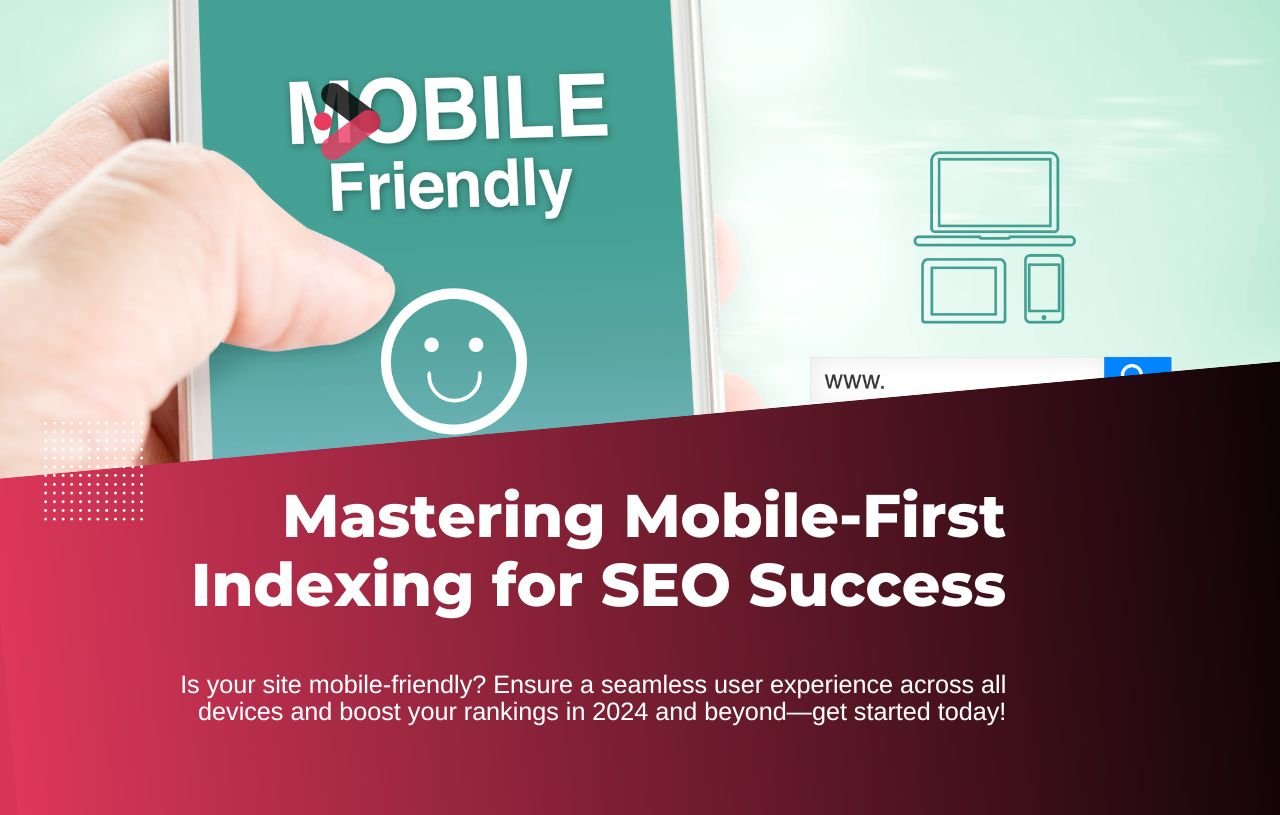
SEO Trends in Mobile-First Indexing
One of the most significant SEO trends for 2024 is the continued emphasis on mobile-first indexing. With the majority of internet users accessing content via mobile devices, Google has fully implemented mobile-first indexing, meaning that the mobile version of your website is now the primary version used for indexing and ranking. This shift underscores the importance of having a mobile-friendly website that not only loads quickly but also provides an excellent user experience.
For example, a local restaurant with a mobile-optimized site that features a simple menu, quick-loading images, and easy navigation is likely to rank higher in mobile search results than a competitor whose site is slow to load and difficult to navigate on a smartphone. Additionally, an e-commerce store with a seamless mobile checkout process will likely see better rankings and higher conversion rates, as search engines prioritize sites that deliver a superior mobile experience.
Optimizing for Mobile UX
To align with this SEO trend, businesses should focus on the following optimization strategies:
Responsive Design
Ensure your website is responsive, meaning it automatically adjusts to fit any screen size, whether it’s a smartphone, tablet, or desktop. This improves the user experience and is favored by search engines.
Fast Loading Times
Page speed is critical for mobile users. Compress images, leverage browser caching, and minimize JavaScript to ensure your site loads quickly on mobile devices. Google’s PageSpeed Insights tool can help identify areas for improvement.
Simplified Navigation
Mobile users prefer easy and intuitive navigation. Implement clear, concise menus and a straightforward user journey that makes it easy to find information or complete actions, such as making a purchase or filling out a contact form.
Core Web Vitals
Focus on optimizing Core Web Vitals—key metrics related to loading performance, interactivity, and visual stability. These metrics play a significant role in Google’s ranking algorithm and are especially important for mobile SEO.
Impact on Search Engine Rankings
The impact of mobile-first indexing on search engine rankings cannot be overstated. Websites that fail to prioritize mobile optimization risk losing visibility and traffic, as search engines increasingly favor mobile-friendly sites. For example, a news website that is optimized for fast, easy access to articles on mobile devices is more likely to appear at the top of search results than one that isn’t.
Moreover, mobile-first indexing aligns with other SEO trends, such as the growing importance of user experience and the rise of voice search, both of which are heavily influenced by mobile usage. By focusing on these aspects, businesses can improve their search engine rankings and better serve their mobile audience, positioning themselves for success in 2024 and beyond.
The Role of Video in SEO

Video Content Dominance
One of the most significant SEO trends for 2024 is the growing dominance of video content. Video has become a central component of online engagement, with users increasingly favoring video over other forms of content. Platforms like YouTube, TikTok, and Instagram Reels are not only drawing massive audiences but are also becoming crucial channels for search. Google’s search algorithms have adapted to prioritize video content in search results, often featuring videos at the top of the results page or in dedicated video carousels. This means that businesses that incorporate video into their content strategy are more likely to engage users and improve their search rankings.
For example, a tutorial video on "how to fix a leaky faucet" is likely to appear prominently in search results, especially if it’s well-optimized and hosted on a platform like YouTube. Users are drawn to the visual and step-by-step nature of video content, making it a powerful tool for increasing engagement and driving traffic.
Optimizing Video for Search
To capitalize on the SEO potential of video content, it’s essential to optimize videos effectively:
Keyword-Rich Titles
Just like with blog posts, your video titles should include relevant keywords that accurately describe the content. For instance, a video titled "Top 10 SEO Trends for 2024" is more likely to rank higher in search results for users searching for SEO insights.
Detailed Descriptions
The description section of your video should be used to provide a comprehensive overview of the content, incorporating relevant keywords naturally. This not only helps search engines understand the context of your video but also encourages viewers to click through to your content.
Tags and Categories
Utilize tags and categories that are relevant to your content. These help search engines categorize your video and match it with appropriate search queries. For example, tagging a video with "SEO trends," "digital marketing," and "search engine optimization" can help it appear in relevant searches.
Transcriptions and Captions
Including transcriptions and captions for your videos is crucial for SEO. Transcriptions provide a text version of your video content, which search engines can crawl, helping your video rank better. Captions not only make your content accessible to a broader audience but also improve engagement, as users can watch videos without sound in various environments.
YouTube and Beyond
YouTube remains the most important platform for video SEO, being the second-largest search engine in the world after Google. A well-optimized YouTube channel can significantly boost your visibility in both YouTube and Google search results. However, the influence of video extends beyond YouTube. Platforms like Instagram, TikTok, and Facebook are increasingly prioritizing video content, and businesses can leverage these channels to expand their reach and improve SEO.
For example, a brand might use Instagram Reels to showcase a new product, with a call-to-action that directs viewers to a more in-depth video on YouTube. This multi-platform approach not only engages audiences across different channels but also strengthens your overall SEO strategy by creating more touchpoints for search engines to index.
In conclusion, video content is not just a trend but a crucial element of a successful SEO strategy. By optimizing video content effectively and leveraging the power of platforms like YouTube and social media, businesses can enhance their search visibility, engage their audience more deeply, and stay ahead in the competitive digital landscape.
Local SEO and Hyperlocal Targeting: Winning in Your Neighborhood

Importance of Local SEO in 2024
SEO trends for 2024 highlight the increasing importance of local SEO, especially for small businesses looking to capture nearby customers. With the rise of mobile searches and the widespread use of voice-activated devices, consumers are more frequently searching for services and products "near me." Google’s algorithms continue to refine their focus on providing localized search results, making it crucial for businesses to optimize their online presence for local searches. Whether you're a local coffee shop, a plumbing service, or a boutique retailer, ensuring that your business appears in local search results can significantly impact foot traffic and sales.
For instance, a user searching for "best pizza near me" is likely to choose a pizzeria that appears in the top local search results, complete with high ratings, reviews, and up-to-date business information. By focusing on local SEO, businesses can ensure they are visible when and where it matters most.
Hyperlocal Targeting Strategies
To excel in local SEO, businesses should go beyond general local optimization and consider hyperlocal targeting—focusing on very specific areas or neighborhoods. Here are key strategies to implement:
-
Google My Business (GMB) Optimization: Ensure your Google My Business profile is fully optimized with accurate information, including your business name, address, phone number, hours of operation, and website URL. Regularly update your GMB listing with posts, offers, and photos to keep your profile active and engaging. Encourage satisfied customers to leave positive reviews, as these play a significant role in local search rankings.
-
Localized Content Creation: Develop content that targets specific neighborhoods or communities. For example, a real estate agent might create blog posts like "Top Schools in Brooklyn’s Park Slope Neighborhood" or "Why Locals Love Living in San Francisco’s Mission District." This type of hyperlocal content not only provides value to potential customers but also helps your site rank for neighborhood-specific queries.
-
Local Keywords and Schema Markup: Incorporate local keywords into your website’s content, meta descriptions, and tags. Phrases like "emergency plumber in Boston" or "wedding photographer in downtown Chicago" can help attract more local traffic. Additionally, using schema markup for local businesses can enhance your search visibility by helping search engines understand your business’s location and services.
Voice Search and Local SEO
Voice search is playing an increasingly important role in local SEO. Many voice searches are local in nature, with users asking for directions, business hours, or nearby services. To optimize for voice search, it’s essential to focus on long-tail, conversational keywords that match how people naturally speak. For example, optimizing for a query like "Where can I find a good Italian restaurant near Central Park?" involves ensuring your content answers such questions directly, possibly through an FAQ page or localized blog content.
Impact on Search Engine Rankings
Effective local SEO and hyperlocal targeting can significantly impact your search engine rankings, particularly for location-based queries. Businesses that excel in local SEO are more likely to appear in Google’s Local Pack—the top three local results that are displayed prominently on the search results page. This visibility not only drives more traffic to your website but also increases the likelihood of in-store visits and sales.
Moreover, as more consumers rely on mobile devices and voice search to find local businesses, the competition for top spots in local search results will continue to intensify. By focusing on hyperlocal strategies and optimizing for local SEO, businesses can maintain a competitive edge, ensuring they are the go-to choice for customers searching within their community.
In summary, local SEO and hyperlocal targeting are essential components of a successful SEO strategy in 2024. By optimizing for local searches and leveraging the power of hyperlocal content, businesses can increase their visibility, attract more customers, and thrive in their specific markets.
The Future of Link Building: Evolving Strategies for SEO Success
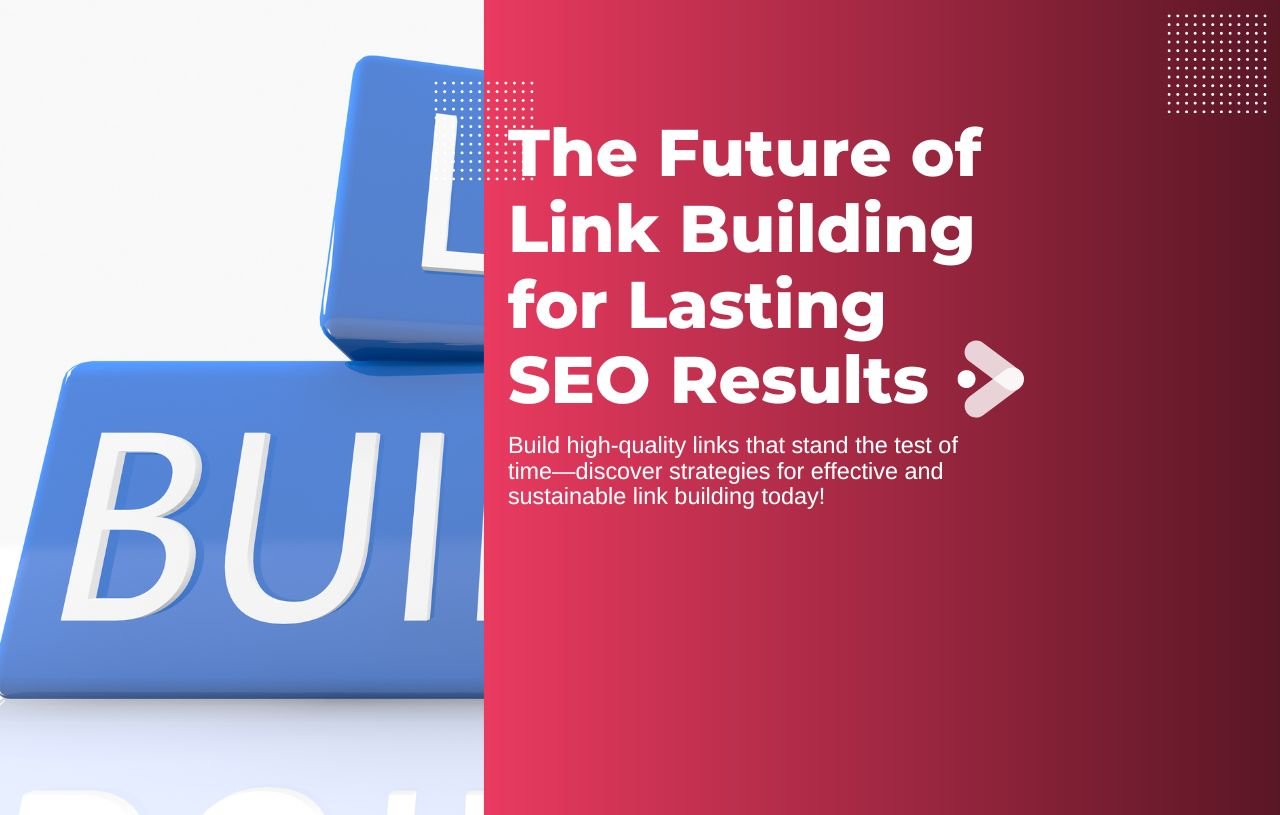
Sustainable SEO: Prioritizing Long-Term Success
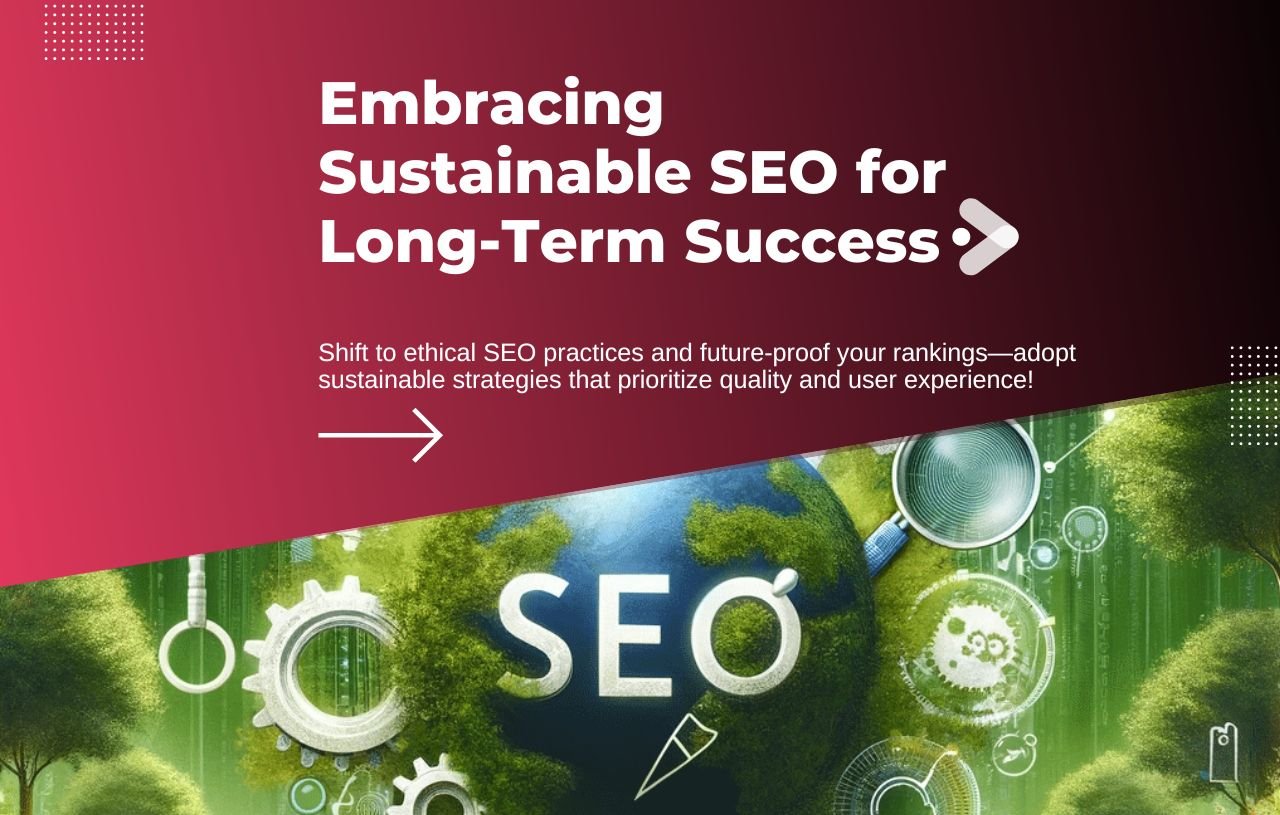
The Shift Toward Ethical SEO Practices
SEO trends for 2024 emphasize a growing shift towards sustainable and ethical SEO practices. As search engines become more sophisticated, they are better at identifying manipulative or "black hat" tactics, such as keyword stuffing, cloaking, and purchasing backlinks. These practices not only risk penalties from search engines but can also damage a brand's reputation. In response, businesses are increasingly focusing on sustainable SEO strategies that prioritize long-term success over short-term gains. Sustainable SEO is about creating high-quality, user-focused content and building genuine relationships that naturally lead to improved search rankings over time.
For example, a website that consistently publishes valuable, well-researched content and earns backlinks through real industry connections is more likely to maintain its rankings despite algorithm changes. In contrast, a site that relies on quick-fix tactics might see temporary boosts in traffic but will likely suffer in the long run as search engines catch on to these practices.
Algorithm Updates and Ethical SEO
Search engine algorithms are constantly evolving, with updates designed to reward high-quality content and penalize manipulative tactics. Google's core updates, such as the Helpful Content Update, continue to refine how search engines evaluate content, placing a stronger emphasis on relevance, originality, and user satisfaction. Ethical SEO practices align with these updates, focusing on providing value to users rather than trying to game the system.
For instance, a news website that prioritizes in-depth, accurate reporting and avoids clickbait headlines will be better positioned to rank well over time, even as search algorithms change. This approach not only builds trust with users but also aligns with search engines' goals of delivering the most relevant and helpful content to users.
Balancing SEO and User Intent
A key aspect of sustainable SEO is balancing optimization efforts with genuine user intent. As search engines become better at understanding user behavior and preferences, it’s essential to create content that truly addresses what users are looking for. This means going beyond keyword optimization and focusing on the overall user experience—ensuring that the content is not only optimized for search engines but also meaningful and engaging for the audience.
For example, an online retailer might optimize product pages not just with relevant keywords but also with detailed product descriptions, high-quality images, customer reviews, and helpful FAQs. This comprehensive approach ensures that the page is useful to potential customers, which in turn improves dwell time, reduces bounce rates, and enhances overall SEO performance.
Focusing on Long-Term Content Value
Sustainable SEO strategies prioritize the creation of evergreen content—content that remains relevant and valuable over time. Unlike trendy or time-sensitive content, evergreen content continues to attract traffic and generate leads long after it's published. By investing in content that has lasting value, businesses can ensure a steady stream of organic traffic and build a robust online presence.
For instance, a "Complete Guide to Digital Marketing" that is regularly updated with the latest trends and best practices can serve as a valuable resource for years, continually attracting backlinks, shares, and traffic. This contrasts with a news piece or trend-focused article that might see a spike in traffic shortly after publication but quickly becomes outdated.
Sustainable SEO is about playing the long game—prioritizing ethical practices, focusing on user intent, and creating content that delivers lasting value. As search engines continue to refine their algorithms, businesses that adopt a sustainable approach to SEO will not only avoid penalties but also build a stronger, more resilient online presence. By aligning SEO efforts with the broader goals of providing value and enhancing user experience, businesses can achieve lasting success in the ever-evolving digital landscape.
The Rise of Zero-Click Searches: Adapting to the New Search Landscape
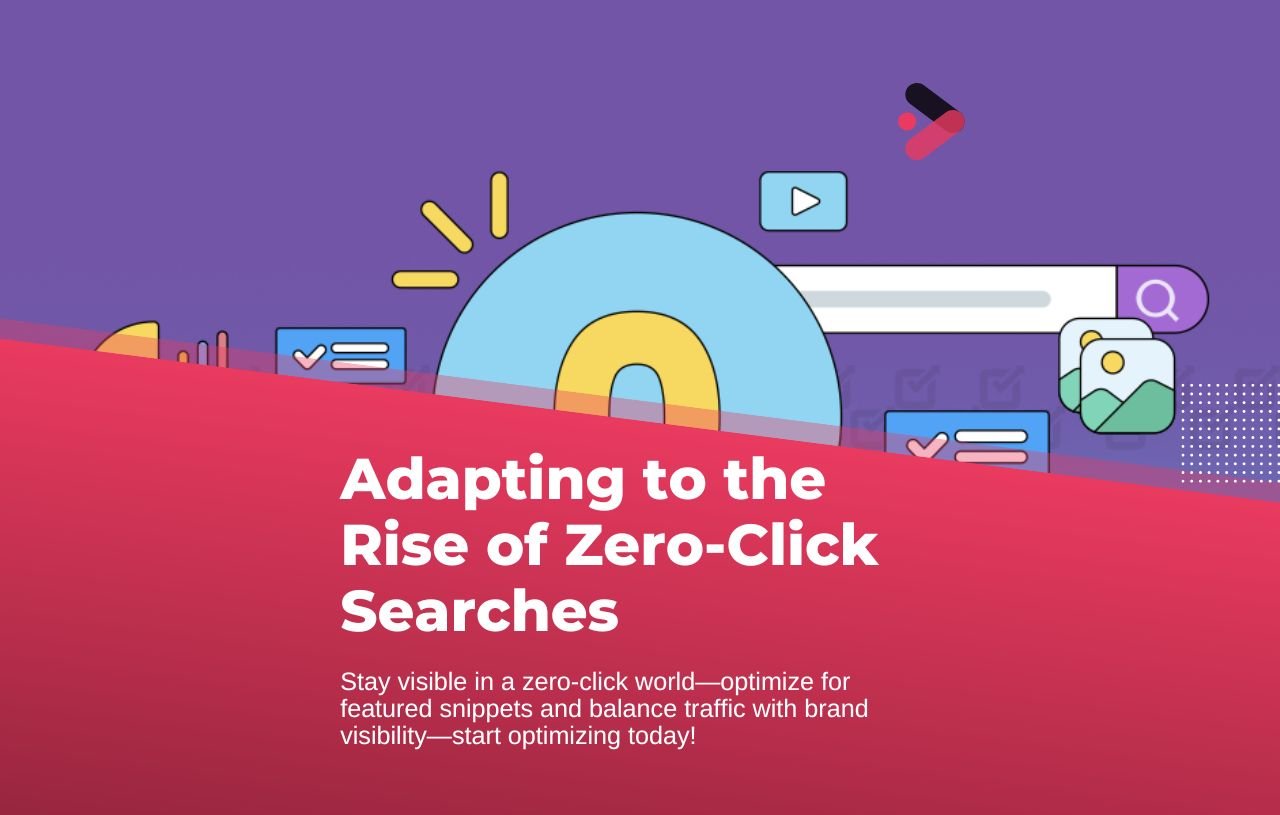
Understanding Zero-Click Searches
SEO trends for 2024 highlight the increasing prevalence of zero-click searches—search queries that are answered directly on the search engine results page (SERP) without the user needing to click through to a website. These results often appear in the form of featured snippets, knowledge panels, or direct answers, providing users with immediate information. As search engines like Google continue to enhance their ability to deliver quick, relevant answers, the number of zero-click searches is expected to grow. This shift poses both challenges and opportunities for businesses, as it changes the way traffic is driven from search engines.
For example, when a user searches for "What is the capital of France?" Google instantly displays "Paris" at the top of the SERP, eliminating the need for the user to click on any link. Similarly, searches for weather updates, simple definitions, or basic calculations often yield zero-click results. While this offers convenience to users, it means that businesses must adapt their SEO strategies to remain visible and relevant in this new landscape.
Optimizing for Featured Snippets
One of the most effective ways to adapt to the rise of zero-click searches is to optimize content for featured snippets. Featured snippets are the short, summarized answers that appear at the top of Google’s search results, often in response to question-based queries. Securing a featured snippet can significantly increase visibility, even if it doesn’t always result in a click-through to your site.
Here are some strategies to optimize for featured snippets:
-
Answer Questions Clearly and Concisely: Identify common questions related to your industry and ensure your content provides clear, concise answers. For instance, if you run a fitness blog, you might target a question like "How many calories should I eat to lose weight?" by offering a straightforward answer within the first few sentences of your article.
-
Use Structured Data: Implementing structured data markup (Schema.org) helps search engines better understand the content on your page and increases the chances of your content being selected for a featured snippet.
-
Format Content for Snippets: Utilize bullet points, numbered lists, and tables where appropriate, as these formats are often favored by Google for snippets. For example, an article on "Top 5 SEO Trends for 2024" could use a numbered list to increase its chances of appearing in a snippet.
Balancing Traffic and Visibility
While zero-click searches can reduce the amount of traffic coming to your website, they also offer a unique opportunity to build brand visibility. Being featured in a snippet or knowledge panel positions your brand as an authority, even if users don’t click through to your site. To balance this, businesses should focus on creating content that not only answers user queries but also encourages deeper engagement.
For example, after answering a question in a featured snippet, you could provide additional resources or a call-to-action within your content that entices users to visit your site for more detailed information. This approach helps capture the attention of users who may want to explore beyond the initial snippet.
Impact on SEO Strategy
The rise of zero-click searches requires businesses to rethink their SEO strategies. Traditional metrics like click-through rates (CTR) are becoming less reliable indicators of success, as more searches are resolved without a click. Instead, businesses should focus on optimizing for visibility and user engagement directly on the SERP.
Additionally, content strategies should prioritize creating high-quality, authoritative content that search engines deem worthy of featuring in snippets or panels. This means understanding user intent deeply and crafting content that not only answers questions but also builds trust and encourages further interaction with your brand.
As zero-click searches become more common, adapting to this trend is crucial for maintaining a strong online presence. By optimizing for featured snippets, balancing visibility with traffic, and focusing on user engagement, businesses can navigate the challenges posed by zero-click searches while leveraging the opportunities they present. In the evolving landscape of SEO, staying ahead means not only driving traffic to your site but also ensuring your brand stands out even when users find answers directly on the SERP.
The Future of AI-Driven SEO Tools: Enhancing Efficiency and Precision
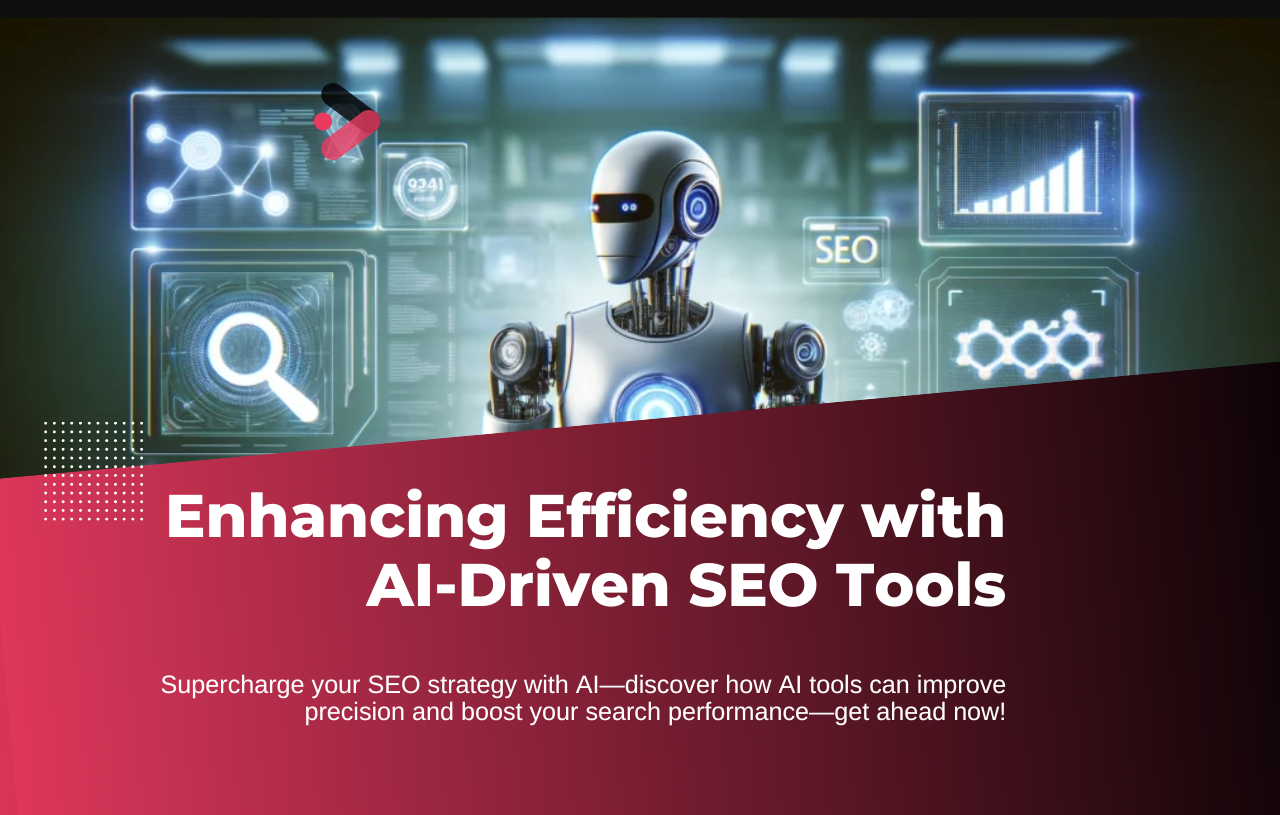
Emergence of AI-Powered SEO Tools
SEO trends for 2024 and beyond underscore the increasing reliance on AI-driven tools to streamline and enhance various aspects of search engine optimization. As AI technology continues to evolve, it is becoming an indispensable part of SEO strategies, offering tools that analyze data more efficiently, provide more precise keyword targeting, and help optimize content with greater accuracy than ever before. These AI-powered tools can automate time-consuming tasks, such as keyword research, site audits, and performance tracking, freeing up marketers to focus on strategy and creativity.
For instance, tools like Surfer SEO and Clearscope use AI to analyze top-performing content in real-time, offering recommendations on how to optimize your content to rank higher in search results. These tools assess factors such as keyword density, content length, and readability, helping content creators fine-tune their articles to meet current SEO standards. By leveraging AI, businesses can stay ahead of the curve and ensure their content is always optimized for the latest search algorithms.
Enhancing Content Creation and Optimization
AI-driven SEO tools are also revolutionizing content creation and optimization. These tools can generate topic ideas, suggest relevant keywords, and even help with the actual writing process by providing content outlines or drafting portions of text. For example, Jasper AI (formerly known as Jarvis) is a content generation tool that uses natural language processing to help marketers create blog posts, product descriptions, and social media content that is both engaging and SEO-friendly.
Additionally, AI tools can assist in optimizing existing content by identifying gaps where additional keywords or topics could be included, improving the content's ability to rank. This kind of optimization ensures that content remains relevant over time and continues to attract organic traffic.
AI in Predictive Analytics for SEO
Another exciting development in AI-driven SEO is the use of predictive analytics. AI tools are increasingly capable of predicting future SEO trends and outcomes based on historical data and current performance metrics. For instance, tools like BrightEdge and MarketMuse use AI to forecast which keywords are likely to grow in importance or which content topics will resonate with audiences in the future. By understanding these trends ahead of time, businesses can proactively adjust their SEO strategies, staying ahead of competitors and capturing emerging opportunities.
For example, an e-commerce site could use predictive analytics to identify seasonal trends in consumer behavior, allowing it to optimize product pages and content in anticipation of increased search interest. This proactive approach not only boosts SEO performance but also enhances overall marketing effectiveness.
Impact on SEO Strategy
The integration of AI into SEO practices is reshaping how businesses approach their digital marketing strategies. With AI handling many of the data-intensive and repetitive tasks, marketers can focus more on strategic planning, creativity, and improving user experience. AI-driven tools also provide deeper insights into audience behavior, enabling more targeted and effective SEO campaigns.
Moreover, as AI continues to improve, we can expect these tools to become even more integral to SEO, helping businesses not just to optimize their content but also to innovate and adapt to the ever-changing digital landscape. The key to leveraging AI in SEO lies in understanding its capabilities and integrating these tools into a broader, holistic SEO strategy that combines technology with human insight.
The future of SEO is undeniably intertwined with the advancement of AI-driven tools. As these technologies continue to evolve, they will play a crucial role in enhancing the efficiency, precision, and effectiveness of SEO strategies. By embracing AI, businesses can streamline their processes, predict future trends, and optimize their content with greater accuracy, ensuring they remain competitive in the dynamic world of search engine optimization. As we move further into 2024 and beyond, the integration of AI in SEO will not only be a trend but a necessity for achieving long-term success.
Conclusion: Navigating the Future of SEO in 2024 and Beyond
As we look ahead to 2024 and beyond, the landscape of SEO is evolving rapidly, driven by technological advancements and changing user behaviors. From the rise of AI and machine learning to the growing dominance of video content and voice search, businesses must adapt to stay competitive. Mobile-first indexing, local SEO, and hyperlocal targeting continue to be crucial, while the emergence of zero-click searches and the importance of sustainable, ethical SEO practices highlight the need for long-term strategies.
AI-driven tools are transforming how we approach SEO, offering unprecedented efficiency and precision in content creation, optimization, and predictive analytics. These tools empower marketers to focus more on strategy and user experience, ensuring their efforts align with the latest trends and algorithms.
In this dynamic environment, the key to success lies in staying informed, being adaptable, and continually refining your SEO strategies. By embracing these trends and leveraging the power of AI, businesses can not only maintain their search engine rankings but also drive meaningful engagement, build trust with their audience, and achieve sustainable growth in the digital landscape. As SEO continues to evolve, those who are proactive in adopting these trends will be well-positioned to thrive in the future.

